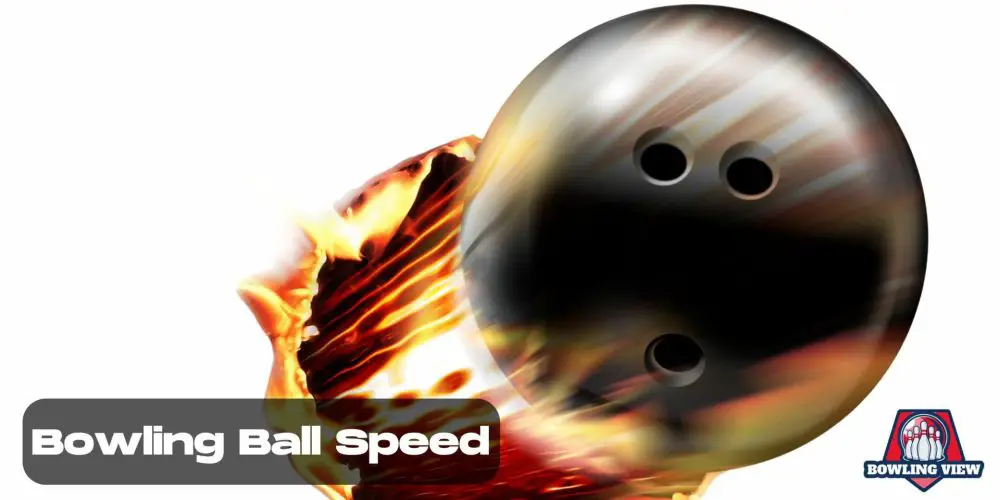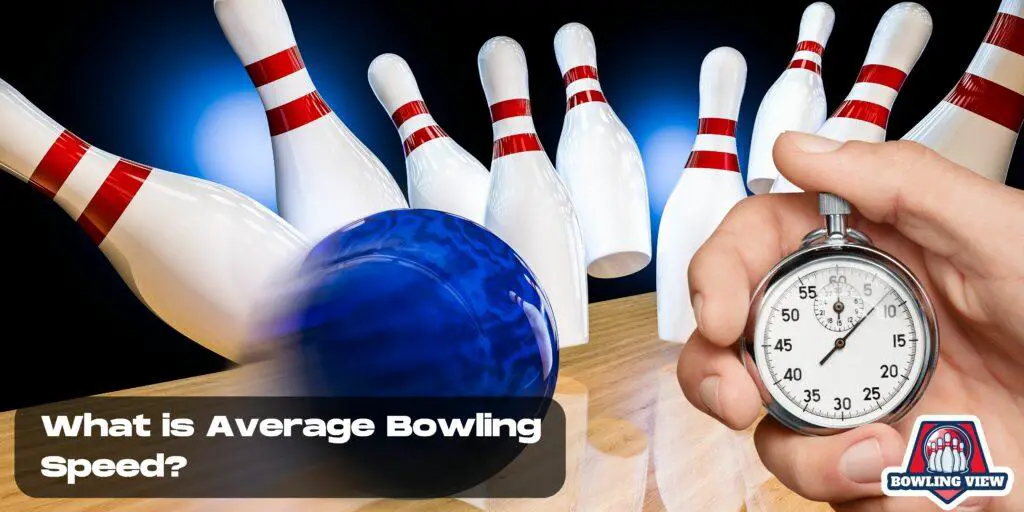It’s fascinating how throwing a bowling ball can become a symphony of physics in action. At the core of this symphony is the concept of bowling ball speed.
Bowling Ball Speed: Unveiling the Mystery
The speed at which a bowler releases the ball onto the lane, usually measured in miles per hour (mph), is referred to as bowling speed.
Factors like the bowler’s strength, technique, and ball weight affect this speed. Want to know what happens when the ball travels at a specific speed? Keep reading!
What is Average Bowling Speed?
Bowling speed plays a significant role in how the ball impacts the pins. As per the United States Bowling Congress, an average bowling speed is around 16-17 miles per hour when the ball hits the pins.
However, the average bowling ball speed can vary based on factors such as the bowler’s style and strength. For instance, a more muscular bowler might release the ball with more force.
Aiming for the Ideal Speed
You might wonder, “What’s the ideal bowling ball speed?” The answer isn’t as straightforward as you might think.
The ideal speed for a bowling ball depends on the bowler’s technique, the lane conditions, and the ball’s weight. But typically, a consistent ball motion is achieved around the average bowling speed of 16-17 mph.
Speed Range: Learning from the Pros
Professional bowlers provide insights into the ideal speed range. A pro bowler often delivers the ball at 18 to 21 mph when releasing it onto the lane. Watch some professional bowling games on the PBA website.
By maintaining a consistent ball speed, professional bowlers can better control how the ball impacts the pins.
Delving into the Rev Rate
In bowling, the rev rate is a fundamental element intricately linked to the speed of a bowling ball. This rate quantifies the number of rotations a bowling ball makes around its axis in a minute.
The interplay between rev rate and speed profoundly influences the ball’s trajectory and its pin carry, dictating the effectiveness with which the ball can topple the pins.
In practical terms, a high rev rate, when combined with the right speed, can induce a powerful curve on the ball’s path, enhancing its impact on the pins. Conversely, a high speed with a low rev rate may result in the ball maintaining a relatively straight path.
Achieving the Optimal Speed for Your Ball
Getting your bowling ball to the best bowling ball speed requires a blend of practice and technique. It’s not just about throwing the ball faster.
A faster ball can indeed cover the length of the bowling lane quicker, but higher speeds could compromise control and pin carry. Therefore, a balanced speed is essential.
Good Bowling: A Game of Speed and Consistency
Good bowling requires consistency and speed. Both the ball’s average velocity and consistent delivery are essential.
Consistent ball motion is key to a successful bowling game, as it effectively increases the chances of hitting the pins.
The Importance of Bowling Balls
Additionally, bowling balls are a crucial component when considering speed. Different manufacturers can produce balls that significantly affect how fast a bowler can deliver the ball.
A bowling ball speed chart will help you determine your ball speed, allowing you to choose the appropriate ball weight and make necessary adjustments to improve your game.
Understanding the Bowling Ball Speed Chart
A bowling ball speed chart helps bowlers optimize their game. It describes the relationship between ball speed, weight, and the effect on pin carry. For example:
| Ball Speed (mph) | 10 lb Ball | 12 lb Ball | 14 lb Ball | 16 lb Ball |
|---|---|---|---|---|
| 10 | Low Impact | Low Impact | Medium Impact | Medium Impact |
| 15 | Medium Impact | Medium Impact | High Impact | High Impact |
| 20 | High Impact | High Impact | Very High Impact | Very High Impact |
In this hypothetical table, you can observe that as the speed and weight increase, the potential for a high impact also increases. For example, a 14 lb ball thrown at a speed of 15 mph is likely to have a high impact on the pins. This data can help you adjust your bowling technique to achieve an ideal speed and improve your scores.
Do note that these charts are general and may not represent the exact effect of speed and weight on your specific game as lane conditions, the bowler’s technique, and other factors also come into play.
I recommend experimenting to reach a speed that works for you.
The Quest for the Highest Speed
The highest speed ever recorded for a bowling ball is an impressive 21 mph! But, achieving such high speeds can be tough for most bowlers.
Try to bowl at a speed that controls the ball and maximizes its impact on the pins.
Conclusion
Understanding and optimizing the speed of your bowling ball can be a game-changer in your technique. Each bowler’s average ball velocity and ideal bowling ball speed are unique, requiring a careful balance of power and control.
Remember, the perfect bowling speed is not just about getting the ball to travel down the lane faster but about achieving a consistent ball motion that ensures an effective ball speed when it hits the pins.
So, consider these tips next time you’re at the local bowling centers: take a breath, increase your ball control, and get ready to bowl like a pro.
Frequently Asked Questions
Bowling ball speed is the rate at which a bowling ball travels down the lane. The maximum speed of a bowling ball is determined by its weight, size, and surface texture.
Generally speaking, lighter balls travel faster than heavier ones and smoother surfaces create less drag which allows for higher speeds.
On average, professional bowlers generate speeds between 15-19 mph (24-31 km/h). Amateur bowlers tend to generate lower speeds of around 12-14 mph (19-22 km/h).
The average speed of a bowling ball delivery is around 17 to 19 mph. Professional bowlers often throw at speeds up to 24 mph, while slower deliveries would be in the region of 10 to 12mph. Ultimately, it comes down to what feels comfortable and works best for you.
To increase your bowling ball speed, you need to focus on the technique of the delivery and arm motion.
Make sure that you are using a consistent and efficient approach when you swing your arm back, as well as pushing off with your legs.
You can also make sure to use a lighter ball since heavier balls require more energy to gain higher speeds. Additionally, using smoother surfaces on bowling balls can reduce drag and allow for greater acceleration during the delivery. Finally, aim for higher release points on the lane to increase speed by gravity.
It’s better to bowl at a speed that is comfortable for you. However, faster speeds can provide more power and control when aiming for strikes and spares. Generally, intermediate bowlers should aim for higher release points on the lane to get the most speed while still maintaining accuracy with their throws.
Fast or slow will depend on your comfort level and proficiency as a bowler; finding the right balance between speed and control is key!
The number of overs a fast bowler should bowl in a day will depend on the skills and fitness level of the bowler. As a general rule, professional bowlers can handle 8-10 overs per day at full speed, while amateur or recreational players may only be able to manage 5-7.
Ultimately, how many overs you should bowl depends on how well you can recover between each over; listen to your body, and don’t push yourself too hard!
Increasing your bowling speed in one month is possible, but will require committing to a regular practice routine. Make sure to focus on technique and form – the faster you can accurately send the ball down the lane, the more success you will have.
Also, consider strength training exercises for your arms and upper body that specifically target increasing your bowling power. Finally, make sure to incorporate short sprints into your fitness routine; this helps increase acceleration from the foul line which translates directly into more speed on each delivery.
With consistent effort and practice, you should be able to see an increase in bowling speed within a month.
To measure the speed of a bowling ball, you can use a radar gun or other sports timing device to track the speed of each delivery. It is also important to note that many modern lanes have sensors built-in that measure and record the speed of each delivery on their computer systems.
If you are looking for more accurate results and detailed data, using these sensors can be a great way to get an accurate reading of your bowling ball’s speed. For casual bowlers, keeping an eye on where your ball ends up relative to where it was thrown from can be an easy way to gauge how fast it was going.
A bowling ball speed chart is a graphical representation of the maximum velocity that can be achieved by various types of bowling balls. The speed chart displays the range of speed from low to high and also includes the corresponding type of ball for each number.
It shows how different factors, such as ball size, weight, lane conditions, and age of the ball can affect its top speed on any given lane condition. This chart is important for bowlers who are looking to get the most out of their game by analyzing how far their ball travels and what type is best suited for different lanes or surface conditions.
The benefit of a bowling ball speed chart is that it helps bowlers to identify the optimal type and characteristics of a bowling ball for their game. It provides an understanding of the maximum velocity that can be achieved by different types of balls, as well as what factors can affect its top speed on any lane condition.
This helps bowlers to make informed decisions about which ball will give them the best performance and achieve better scores.



